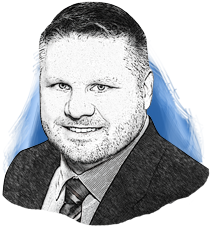March 5, 2018 PA0-M03-18-CL-001
Repurposing idle equipment can add both hard and soft value to a company. Hard-value savings can be realized by putting good equipment back into service in another department or another site, avoiding the cost of new machinery and lowering overall production costs. This results in a cost avoidance on the capital expenditure budget for the receiving site, meaning the site planned to purchase new equipment, but instead opted for used equipment with as little as $0 net book value. The decrease in capital spending lowers overall production costs.
Additionally, the sending site eliminates soft costs such as wasted storage space and hard costs associated with removal, leased or rented storage space, as well as financial-related issues such as net book value and personal property taxes. Managing these assets effectively requires an investment recovery program. A pharma company should consider outsourcing this program to a third-party asset management company that has knowledge of the secondary equipment marketplace and the capacities to manage removal projects, store and keep track of equipment, market machinery to the best possible buyers, and manage the sales process.
Disparate systems and information. Often, multiple departments are tasked with tracking and managing equipment assets in a pharmaceutical company, and they tend to use different systems and identification methods. For example, the finance department may track the equipment as a “fixed asset” for accounting, depreciation, and tax purposes. The financial system will probably assign the equipment a fixed asset number or identification. The maintenance department may track the entire unit or parts of the unit that require routine, scheduled preventative maintenance. These are assigned a maintenance tag or identification that is separate from the fixed asset component.
Operations may also designate the equipment as part of a production flow, assigning a designation to a group of equipment (i.e. Solid Dose Flow 1) that may consist of several pieces of equipment on different floors and rooms. All designations serve a different purpose and it is very hard to keep everything aligned after equipment is installed and running. Things become even more difficult when the equipment is idle or in surplus storage.
Storage costs. When equipment is not in use, it takes up valuable manufacturing floor space, valuable warehouse space, or other expensive on-site storage options. These spaces all have a calculable cost associated with them as well as massive opportunity costs. The opportunity costs often result in idle equipment being forced out of “expensive” space that is claimed for production or other money-making activities, and forced into “cheaper” off-site or rented storage options such as boneyards, trailers, containers, and off-site warehouses.
Boneyards can quickly become unsightly and unmanageable — and maybe even illegal under local ordinances. Rented storage carries a monthly or annual cost and the equipment is usually not stored in the best conditions, resulting in unnecessary damage that can permanently degrade the value of the machine. As the equipment is out of sight, it is also out of mind. It can become “lost” and new pieces purchased, even though a perfectly good machine is in storage, but forgotten.
Network Management. Often, idled equipment is left in storage until something forces removal – an expiring lease, a housecleaning, etc. Even when equipment is tracked appropriately, it can often be very hard to sell that machinery, either internally to another department or to an in-network site as a cost-saving opportunity. This is mainly because the equipment is not presented in a manner that allows for the network to truly evaluate the opportunity. Lists are circulated, but they don’t contain any photos, they are missing information, or lack details for a potential receiving site to evaluate the opportunity. This often results in equipment remaining idle.
Catalysts for Equipment Divestment
Several reasons unintentionally cause equipment in pharma manufacturing site to sit idle, warranting the need to divest.
Outsourced Investment Recovery Program
No one department is responsible for equipment management after that equipment is idled. The operational Cost Center owns the machinery, but if it’s not on the floor in front of them, it may not be on their mind. Finance is not in a position to manage surplus equipment. In fact, finance is usually the department that identifies the equipment and finds a way to get the equipment off the books or back into production where it is a money making asset and not an expense. Maintenance physically manages the equipment but has little incentive to dispose of surplus equipment. Purchasing is often charged with the business-side of disposal, but lacks sufficient resources to effectively market and move the equipment either internally or externally.
An investment recovery or resource program, carried out by individuals in these key departments, can generate cost savings and cash for a business. The team works to sell the idle items, but this can require additional information systems and overhead costs to track the items for sale. Instead, an outsourced investment recovery service that is experienced in pharmaceutical asset management has the experience, equipment knowledge, and a built-in network of potential buyers necessary. The contractor manages the process by appraising the equipment, evaluating removal costs, and determining the sales method that will generate the best financial return and allow resources to remain focused on core activities such as research and development, production and logistics.
References

Matt Hicks, Chief Operating Officer at Federal Equipment Company, is a pharmaceutical industry veteran with more than 15 years of experience helping companies get the most value and utility out of their manufacturing and process equipment assets.